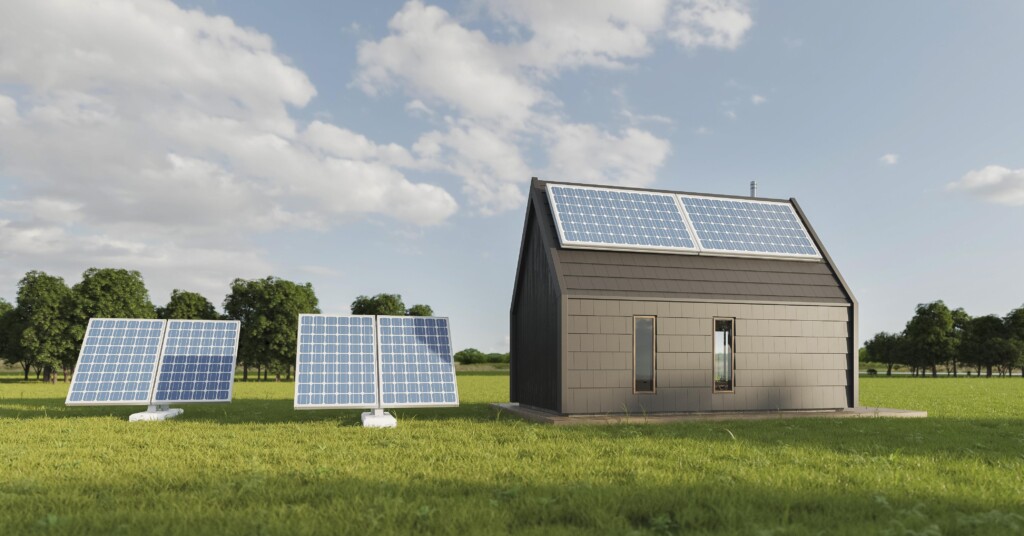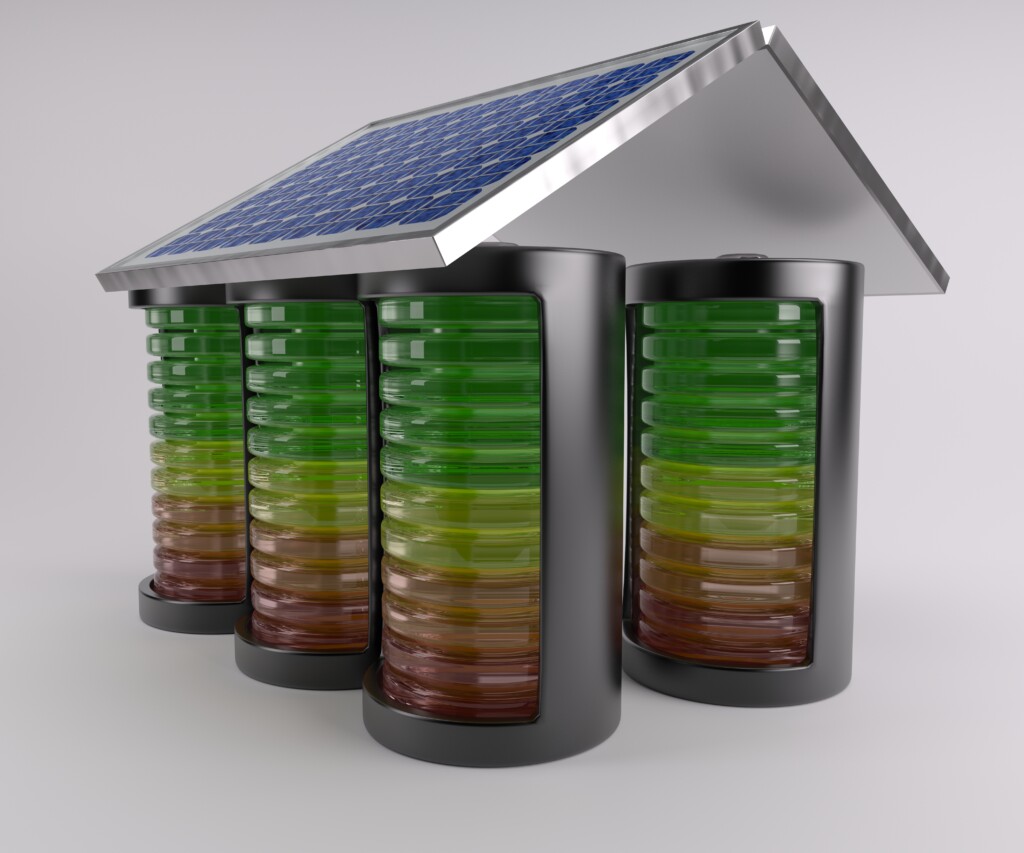Have you ever found yourself wanting to take the leap into solar energy but feeling hesitant about completely disconnecting from the grid? Perhaps you’ve pondered how you can optimize your energy usage, save money, and still have a backup plan for those less-than-sunny days? The answer could well lie in embracing a hybrid solar system. A hybrid solar system ingeniously combines the best of both worlds — the self-sufficiency of solar power and the reliability of grid connectivity. With the ability to store excess solar energy and even sell it back to the grid, it offers a robust solution for today’s energy-conscious homeowner. Come along as we explore the bright potential of hybrid solar systems and determine whether or not they are the answer to your energy problems.
A hybrid solar system combines the advantages of both grid-connected and off-grid solar power systems. They save you money and lower your carbon footprint at the same time. Let’s briefly go through the differences between grid-connected and off-grid solar systems before we delve into hybrid systems.
Grid-connected: As the name implies, grid-connected solar systems are hardwired into the local power grid. They use solar panels to produce energy during the day and rely on grid power when the sun isn’t out. Any excess electricity that is generated during the day but that is not used by your home is fed back into the grid. This process is called net metering and it can offset your electricity bill as utility companies often give you credit for the excess electricity you provide. During times when your panels are not producing enough electricity to power your home, you will draw power from the grid. One of the significant advantages of a grid-connected solar system is that you have a reliable source of power at all times, either from the solar panels or the grid. However, if there’s a power outage, grid-tied systems typically shut off for safety reasons to prevent backfeeding electricity into the grid.
Off-grid: Off-grid solar systems, also known as standalone power systems, don’t rely on any external infrastructure at all. They are perfect for off-the-grid situations or for people who want to be completely self-sufficient in terms of energy needs because they rely only on solar panels and battery storage. This is particularly useful in remote locations where connecting to the grid might be difficult or too expensive. Since they don’t rely on the grid, off-grid systems require a lot of careful planning to make sure you have enough power during periods of low solar production (like during winter or overcast days). This typically means installing more solar panels and batteries than a grid-tied system. A generator might also be used as a backup.
So, what’s a hybrid solar system? A hybrid solar system combines the best of both grid-connected and off-grid solar systems. These systems are able to generate electricity from solar panels and store any surplus in batteries for later use while maintaining a connection to the utility grid. You get the advantages of solar electricity and the security of the grid in case the sun decides to take a day off.
Like a grid-connected system, a hybrid system is connected to the electricity grid and can feed excess electricity back into it. This allows you to take advantage of net metering programs to offset your energy costs. However, similar to an off-grid system, a hybrid system also includes battery storage. This means that instead of feeding all your excess solar energy back into the grid, you can store some of it in batteries for later use. This is particularly useful during power outages. When the grid goes down, a hybrid solar system can use the stored power to keep your lights on. Moreover, with a hybrid system, you can also draw power from your batteries during times of peak energy usage (usually early morning and evening) when electricity costs are higher, a practice known as load shifting or peak shaving.

The three primary parts of a hybrid solar system are the panels themselves, the inverter, and the batteries. The solar panels capture sunlight and convert it into direct current (DC) electricity. This conversion happens within the photovoltaic cells that make up the panels, harnessing the energy provided by photons in sunlight to create an electric charge.
Next, the DC electricity generated by the panels is sent to the inverter. The inverter serves as a kind of translator, converting the DC electricity into alternating current (AC). AC electricity is the standard used by most household appliances and electronics, making the inverter an essential component of the system. Once the electricity has been converted to AC, it’s used to power your home’s electronics and recharge the system’s batteries. The batteries act as a storage solution for excess energy produced during the day. They store the surplus of electricity for use during nighttime, during periods of heavy cloud cover, or during any other instances when your panels can’t generate enough electricity to meet your needs.
In the event that both the solar energy and stored battery power are not sufficient to meet your demands, the hybrid system can draw on electricity from the grid. This feature offers a level of reliability and convenience not found in entirely off-grid solar systems. It’s like having a backup plan for your backup plan – ensuring you’re never left without a power source.
Let’s talk money. The price of a hybrid solar system might change with factors like the size of the system, the type of batteries used, and the cost of installation. As of 2023, the average cost of a comprehensive hybrid solar system is between $20,000 and $40,000. According to Next Earth Solar, for a fully-installed 6 kW system with monocrystalline solar panels and one rightly-sized lithium-ion battery you can expect to pay $30,000. But this is just an estimate, it’s important to remember that costs can change based on factors including your geographic region and order details.

But why does it cost what it does? A hybrid solar system’s price tag may rise or fall depending on a number of factors. Among these are the system’s kilowattage rating, the solar panel model, inverter efficiency and battery capacity. In addition, the price of installation may change based on factors including the scope of the work and the price of any required permits or inspections. A larger or more efficient system may cost more initially, but it can help you save money on your electricity bills in the long run.
Solar systems can be made more affordable thanks to tax credits and rebates offered by governments in many countries. In the US, the federal government offers a significant tax credit for solar photovoltaics— 30% of the system’s cost till 2032. This substantial solar energy incentive reduces the overall investment, making solar energy an even more viable and attractive option for many homeowners and businesses. Additionally, other incentives such as feed-in tariffs, additional local or state tax breaks, and subsidies for selling energy surpluses back to the grid can further decrease the net cost of installing a solar system and increase the return on your investment. To fully understand and benefit from these incentives, it’s important to find out what solar energy resources are available to you. You can do this by contacting your local government, a tax professional, or speaking with a knowledgeable solar energy specialist
Lithium-ion and lead-acid batteries are the two most common choices for hybrid solar systems. When compared to other battery types, lithium-ion batteries are preferred because of their greater durability, greater efficiency, and lower maintenance requirements. However, they may be more costly to purchase initially than lead-acid batteries. According to LawnLove, lithium-ion batteries for solar systems cost from $6,000 to over $10,000.

But how does one go about selecting the proper battery? Here are the key components to keep in mind:
Ok, and where do I buy them? When it comes to sourcing components for your hybrid solar system, there are plenty of options available. You can opt for complete hybrid solar system kits from various manufacturers or online sellers, which offer a convenient and potentially cost-effective solution with all components designed to work together. A notable mention in this realm is the SunPower Equinox system accompanied by SunVault storage, which is a complete home solar solution, tailored by a single company to ensure seamless integration and superior efficiency. However, if you seek greater customization or control over the quality of individual components, consider purchasing solar panels, inverters, and batteries separately.
Think about things like price, warranty, and user reviews when deciding where to get your batteries and components to be sure you’re getting the most for your money. Before settling on the components and batteries for your hybrid solar system, it is important to do your homework and evaluate products, just like you would with any other large purchase. Choose a brand that has a solid reputation and history of success in the solar market and has received high marks from previous customers. Think about the product’s effectiveness, durability, and guarantee while you shop.
That depends on several factors, including whether you’re an apartment or villa owner and whether you want to go fully off the grid or partially off the grid.
The viability of a hybrid solar system installation is highly context dependent. Apartment owners may find it more difficult due to factors such a lack of private roof space, communal amenity areas, and stricter building codes. However, alternatives such as community solar projects and shared solar systems exist.
A hybrid solar system is frequently preferable for villa or single-family households due to their greater roof area and independence during installation. If you want to know if a hybrid solar system is ideal for you, it’s best to talk to a solar professional about your unique situation.
There are a few things to think about if you’re trying to decide between installing a hybrid solar system and getting fully off the grid. Hybrid systems allow you to take use of solar energy while still being linked to the grid, so you have access to steady electricity even when solar output is low. This is especially helpful during times of high energy demand or in regions where the weather is unpredictable.
However, if you live in a rural area or just want to cut ties with the power company altogether, an off-grid system may be the way to go. Completely off-grid solutions, on the other hand, might be more costly and need precise preparation to guarantee sufficient power generation and storage.
Let’s have a look at the pros and cons of a hybrid solar system to help you make up your mind:
Considerations like initial investment, electricity costs in the area, and rebates all influence how quickly a hybrid solar system pays for itself. Considering variables like solar panel efficiency, battery capacity, and system longevity, you can estimate how much money you will save each year on your electricity bill and use that to determine the return on investment for your hybrid solar system. The ROI for a hybrid solar system can be anywhere from 5 to 15 years, depending on the system’s configuration and where you live.
The initial investment in a hybrid solar system may be high, but the cost savings over time can be substantial. Saving money on utility bills and safeguarding yourself against growing energy costs can both be accomplished by generating some of your own electricity and lowering your dependency on the grid. Long-term savings and a dependable energy supply are guaranteed by the 10- to 25-year guarantees offered by several solar panel and battery manufacturers. Even after 20 years, your solar panels will still be generating roughly 90% of their original capacity. This is because the efficiency of solar panels normally diminishes at a rate of 0.5% per year.

The advantages of solar power can be enjoyed without having to entirely disconnect from the grid, and hybrid solar systems provide an attractive blend of energy independence and grid connectivity to make this possible. Hybrid solar systems should be considered by households looking for renewable energy sources since they minimize electricity costs, grid dependence, and carbon emissions.
A hybrid solar system is something to think about if you’re sick of paying exorbitant electricity rates and want to help the environment. Now is a great time to look into solar energy because of all the resources accessible, from books to do-it-yourself kits. So, why are you stalling? Talk to a solar pro, weigh your choices, and jump on the hybrid solar bandwagon right away. Believe us; both you and the Earth will be grateful in the long run. Maybe someday you’ll even decide to live completely independently, like some sort of solar-powered super hero.
Almost anywhere is suitable for installing a hybrid solar system; nevertheless, it is vital to take into account aspects like the amount of sunshine the area receives and any rules that may hinder the installation. If you’re not sure if a hybrid solar system is ideal for your home or business, talking to a professional solar installation can assist.
The primary distinction between a hybrid solar system and a regular solar system is the presence of an energy storage component in a hybrid system. This enables the system to store extra energy for later use, as opposed to a standard system, which simply distributes excess energy back to the grid.
Batteries, such as lithium-ion or lead-acid batteries, are the most popular forms of energy storage systems used in hybrid solar systems. Other forms of storage devices, such as flywheels or pumped hydro storage, are possible but less prevalent.
Stay a while and read more posts like this
In recent years, Europe has witnessed a remarkable surge in the adoption of solar panels, marking a pivotal shift towards renewable energy. Data from the...
Renewable Energy, Solar Energy, Solar Energy Basics, Solar Technology
“Unlock the Truth: Get the Facts on Solar Energy!” Introduction Solar energy is becoming increasingly popular as a renewable energy source, but there are...
Imagine a world where you’re able to cut your monthly energy expenditure substantially. A reality where your home isn’t reliant on finite,...